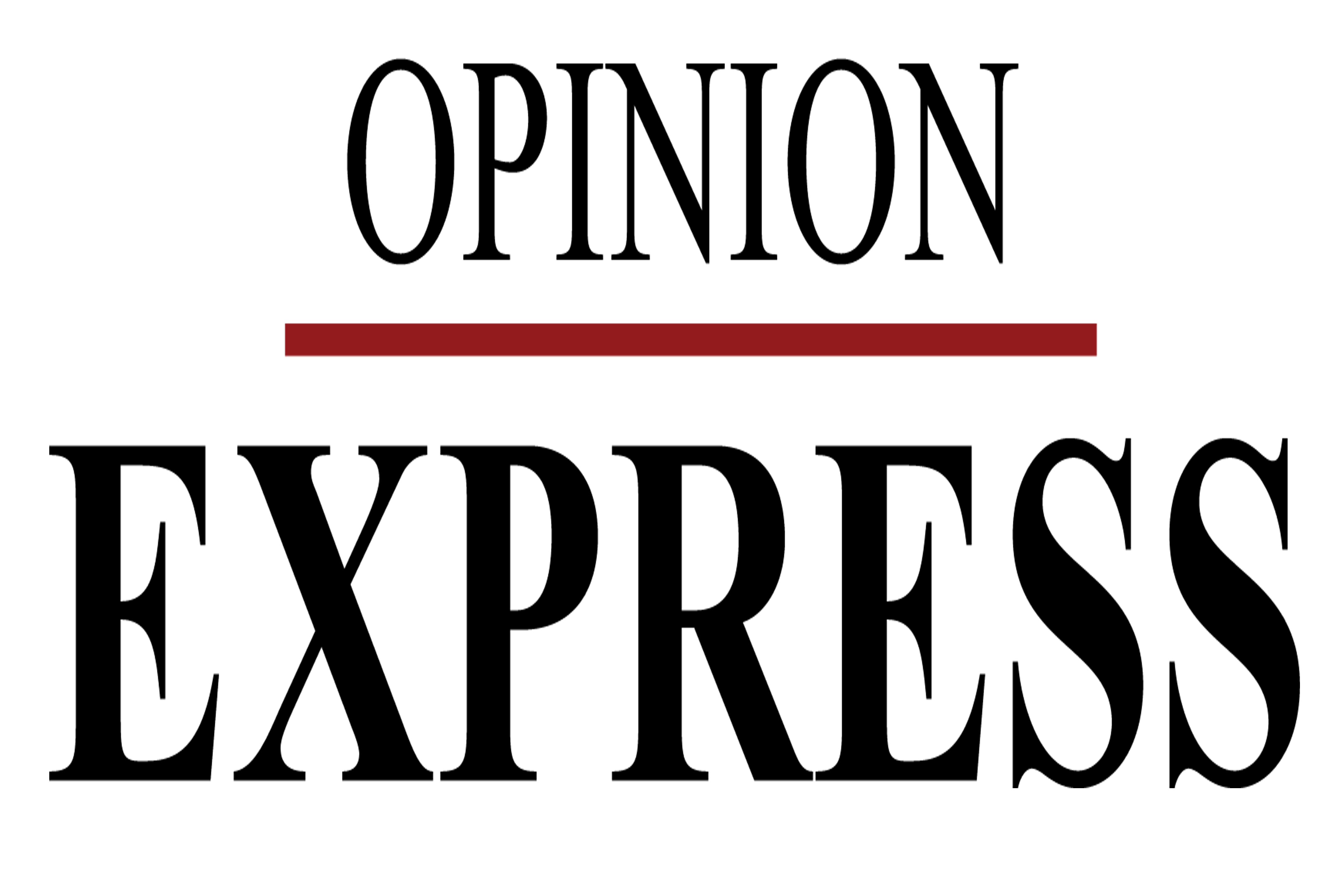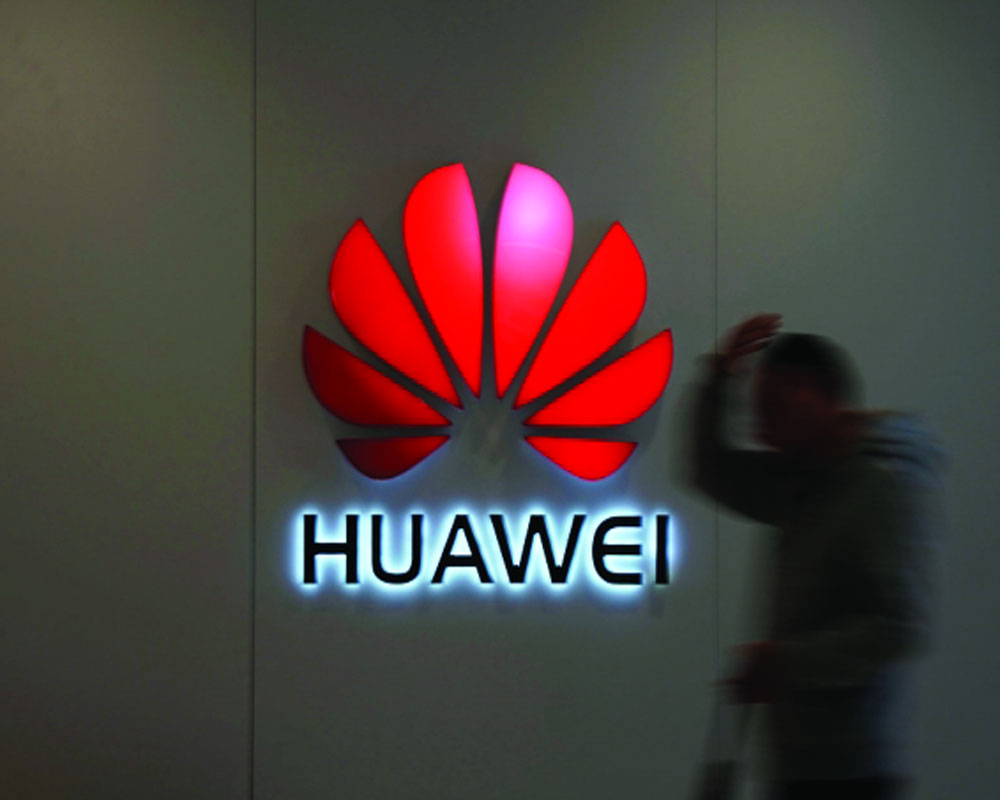
Now, a telecom war
by Opinion Express / 03 July 2020
There are alternative vendors but costs would go up. We must encourage equipment manufacture with innovation and now
Yes, the economic realities of China dominating much of our product supply chains, from electronics to drugs, weigh heavy on us. Yes, we are deeply aware of sudden disruptions, litigation and fair trade violations if we take a dramatic step of boycotting China overnight. And while building self-sufficiencies is a long-term and sustained effort, there is no reason why we cannot begin taking atma nirbharata seriously while we can. For the latest Chinese ambush at Ladakh has cost us 20 soldiers and over-tested our patience and strategic responsibility in the region. China continues to eat into our territory as it always has. It won’t settle as long as it doesn’t get what it wants and this presumed supremacy has finally got the Government thinking about reducing our dependencies on it. For the summit diplomacy, which has yielded nothing on the ground except encouraging more hostilities, has been a colossal waste of time that smartly sidestepped contentious border issues and helped China deepen its market access as part of trade deals. So Union Minister for Road Transport and MSMEs Nitin Gadkari has said that no Chinese company will be allowed to participate in any highway or MSME project either directly or indirectly, the latter implying outsourcing consultancies by the bidder company. He even suggested alternative technologies that would help us compete on cost effectiveness and gave the example of PPEs, something which we thought would have to come in bulk from Chinese factories and something which we are exporting now. The shrinkage of trade volume to India won’t impact China much, which can only be upset about being denied entry to a future vibrant market, and it is not that current commitments are not being honoured. It is just that manufacturing our own is a sovereign decision and COVID-19 and the Galwan attack have just been accelerators. Similarly, the Department of Telecommunications cancelled the much anticipated 4G upgradation tender of Bharat Sanchar Nigam Limited (BSNL) to avoid participation by Chinese companies like Huawei and ZTE. Local operators such as Airtel, Vodafone and Jio have been asked to reduce dependence on Chinese companies. Meanwhile, the Indian Railways has already cancelled a Rs 471 crore contract with the Beijing National Railway for a project on the Eastern Dedicated Freight Corridor. Of course, the US, too, has been red flagging concerns about Huawei and ZTE being a “national security risk” because of their data mining and surveillance operations while working their telecom grids. It is even exerting pressure on its allies, India now getting top billing, to comply by banning them.
But that’s not the reason why India is going for a drastic decision on telecom. It is choosing sectors where either an alternative supply chain exists or where it is possible to magnify home-grown capacities. Compared to the mobile handset industry, where replacing Chinese supply chain and products is almost impossible, in the telecom equipment market that is very much possible. There are European nations, too, in the business though supplies from here would come at a cost. The size of the telecom equipment market in India is around Rs 12,000 crore and the share of Chinese products is currently around 25 per cent, simply because their prices are attractive to operators. That’s why the 4G network of big players like Airtel and Vodafone have been built by Huawei and ZTE. Huawei alone has aggressively made inroads into nearly 25 per cent of the total telecom equipment market in India. While Bharti Airtel uses up to 30 per cent Chinese telecom equipment, including Huawei, for its networks, Vodafone Idea uses as much as 40 per cent. Reliance Jio is the only operator functioning without a Chinese vendor as its network is fuelled by South Korea’s Samsung. But replacement, be it from South Korea, Taiwan or any other Southeast Asian nation, can only work in the short-term if self sufficiency is our ultimate goal. Remember that despite the “Make in India” launch in 2015, there has been no impetus for localised equipment production. The ban comes at a time when India is seeking to raise $84 billion from a sale of airwaves, particularly for new technology, which would revolutionise connectivity. So we need to immediately ramp up existing electronic manufacturing facilities and divert them towards 5G equipment manufacturing if we are to exclude Chinese firms from 5G trials. Indian innovation has always risen to the top during crisis and we could leverage our home-grown talent to re-engineer receivers and emitters in discarded mobile devices to make 5G equipment in a cost-effective manner. We should be as enthusiastic about announcing innovations and encouraging R&D than just announcing a ban that spooks markets.
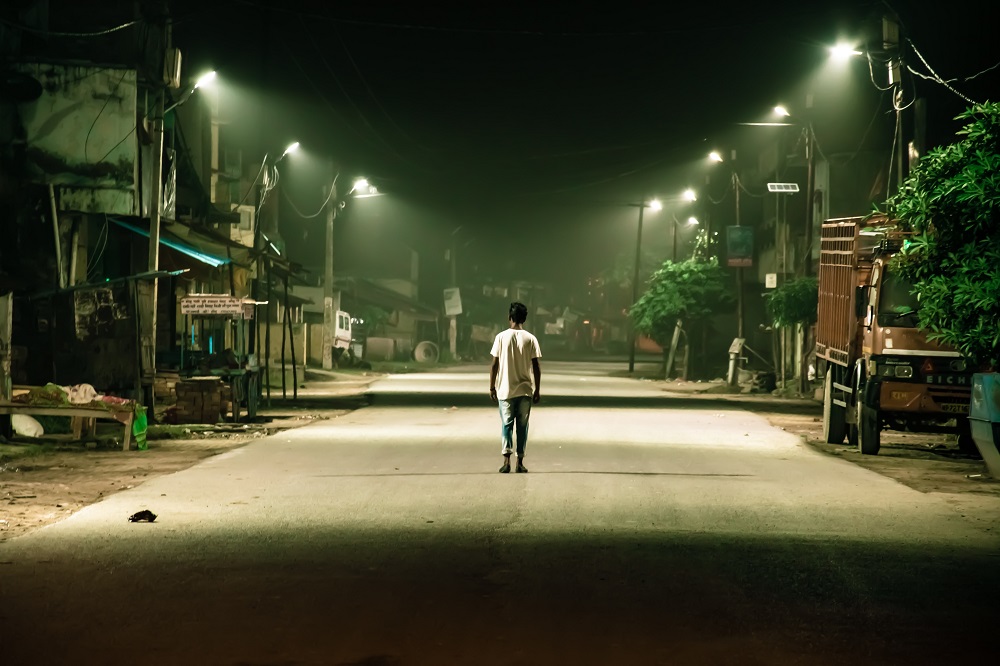
Welfare of migrants is key
by VK Bahuguna / 02 July 2020
Employers need to be humane and must be dealt with strictly if they fail to take care of workers in emergencies, like they did during the pandemic
India went into a nationwide lockdown on March 24 to combat the Coronavirus pandemic and the entire Government machinery was galvanised by invoking the National Disaster Management Act. However, the sudden shutdown announced by Prime Minister Narendra Modi created a serious governance and humanitarian crisis as panicked migratory workers in metro cities like Delhi, Mumbai, and Ahmedabad set out for their home States on foot. The Government, before announcing the lockdown, should have asked the Labour Ministry to plan an exit route for migratory workers who are the backbone of urban India’s economy. But that was not done, leading to endless suffering for the migrant workers.
Bureaucrats enjoy tremendous clout in running the Government and advising politicians, but in this case the Government machinery, from top to bottom was in deep slumber and failed to visualise the enormity of the problem. The district-level bureaucracy however, did extremely well in properly visualising and enforcing the lockdown and contained the pandemic to a certain extent. Had the migratory workers been tackled carefully, the virus would not have spread to rural India. For over two months there was chaos on the roads as nervous labourers and daily wage workers, who lead a hand-to-mouth existence, decided to go home and cover hundreds of kilometres on foot. As a result, many died midway due to hunger, thirst, fatigue and some died in horrific road and railway accidents.
The Prime Minister and the Centre realised their mistakes quite late in the day and started running special Shramik trains to ferry the migrant workers to their hometowns, just as they began a phase-wise easing of the lockdown. As a consequence, the returning migrant workers spread the virus in their respective States. For example, in Uttarakhand there were only a few cases of COVID-19 in Dehradun and Haridwar earlier. But now the whole State is witnessing a daily spike in cases. This could have been avoided with foresight.
Most of the migrants fall in the category of the unorganised workforce and are employed by enterprises owned by individuals. Some are self-employed workers engaged in the production, sale of goods or provide services of any kind. This also includes a worker in the organised sector who is not covered by any Acts mentioned in Schedule II of the Unorganised Workers’ Social Security Act, 2008. The Government enacted the Building and Other Construction Workers (Regulation of Employment and Conditions of Service) Act, 1996 to protect them but the mandarins of labour and other Ministries failed to implement the provisions. It is estimated that `31,000 crore is available under this Act for building and construction workers. Similarly, labour welfare funds are also available.
Before announcing the lockdown, the Central Government should have asked all the migratory labourers to register at the nearest Government office and prepared an online list of such people living in the cities with the help of the State machinery. Based on this list, the funds available for the welfare of labour could have been utilised to retain them at their work stations. The employers should have been asked to pay their salaries for at least three-four months, with some support from the Government. Now, the Centre has announced a `20 lakh crore stimulus package for the economy, which also includes a package for migrant workers who have returned home. Had it been done at the start of the lockdown, economic activities would have assumed without a hitch. After all, without workers, the industrial and manufacturing economy cannot work. Now the Government has eased the lockdown but people are finding it difficult to find manpower to restart manufacturing units.
The people at the helm of affairs must ponder over the fate of the 45 crore unorganised sector workers who are the backbone of the `10 lakh crore construction, industrial and agriculture sectors. The Government should constitute a committee to identify the sector-wise strength of the unorganised sector workers and their problems of finding a livelihood. The Building and Other Construction Workers (Regulation of Employment and Conditions of Service) Act, 1996 had made adequate provisions for accommodation, crèche, canteen, education and healthcare. But these were never implemented by the contractors, Government engineers and other supervisors, though there is provision for penalty and punitive action. In the absence of unions, workers are not aware of their legal rights and are exploited and shunted out at the slightest protest.
The Government ought to direct all stakeholders and create an enforcement regime to ensure welfare measures for the unorganised sector workers. The recent package announced should be used to create all facilities in urban localities as per the 1996 Act provisions. It would be desirable to frame a new comprehensive Act covering all migrant/unorganised sector workers. The employers need to be humane and must be dealt with strictly if they fail to take care of workers in emergencies, like they did during the present pandemic. Labourers deserve to live with dignity. We must remember the words of Mahatma Gandhi who once said, “Man becomes great exactly in the degree in which he works for the welfare of his fellow men.”
(Writer: VK Bahuguna; Courtesy: The Pioneer)
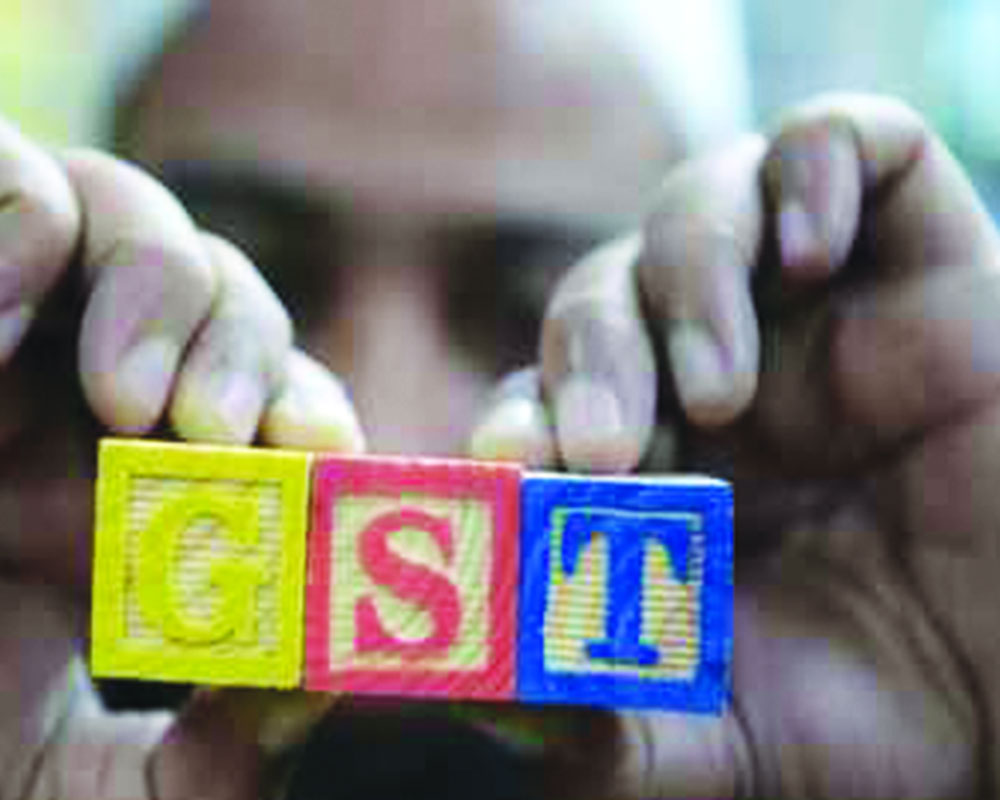
The GST indemnity riddle
by Uttam Gupta / 01 July 2020
Even as States expect full and timely compensation for the shortfall in their tax revenue, vis-à-vis a given benchmark, the Union Govt has been making short payment and that too after a time lag
The dwindling tax revenue of both the Centre and States since the financial year (FY) 2019-20 has led to a piquant situation. Even as States expect “full” and “timely” compensation for the shortfall in their tax revenue (their own collection plus the amount received as their share in indirect tax collected by the Centre as per the Finance Commission’s devolution formula) vis-à-vis a given benchmark, the Union Government has been making short payments and that too, after a time lag. The compensation to States is intertwined with the Goods and Services Tax (GST) in vogue since July 1, 2017. In fact, the passage of the Constitutional Amendment Bill (August, 2016) leading to the launch of GST was predicated on the Centre giving a legally-binding commitment that it would compensate the States for the loss of revenue they would incur under the GST vis-à-vis the revenue they would get under the subsisting dispensation of excise duty, sales tax or Value Added Tax (VAT) plus other local taxes (GST was first mooted in 2006 by the then UPA Government but did not bear fruit during its term as it was unwilling to give this commitment).
Accordingly, the Modi Government enacted the GST Compensation Act (2017) to provide for compensation to the States for five years between 2017 and 2022, for the loss of revenue to be calculated as the difference between their actual collection (including transfer of their share in indirect tax collected by the Centre) and the amount they would have got with annual growth at 14 per cent over the 2015-16 level, under the erstwhile dispensation.
However, to ensure that the Centre has enough funds to pay for the shortfall faced by States, it also passed an amendment to the GST Compensation Act (2018) to levy a cess on the supply of certain goods and services. The cess is levied on demerit goods (those which fall in the highest tax slab at 28 per cent, with the other slabs being five per cent, 12 per cent and 18 per cent, besides the exempt category) such as automobiles, tobacco, alcohol and so on, with a proviso to use the proceeds for compensating States. The cess was to remain in force for five years in sync with the Centre’s obligation to compensate States for that period. The rationale behind keeping these arrangements in place for five years was that at the end of this transition, i.e. 2021-22, the GST dispensation would have acquired the much-needed “vitality” and “resilience” to yield sufficient resources for the States to meet their budgetary requirements within the prudential limit set under the Fiscal Responsibility and Budget Management Act (FRBM), thereby obviating the need for any extra support.
Before we proceed to do the number crunching and analyse the situation on ground zero, it should be abundantly clear that two provisions in the law viz. one relating to compensation and the other levy of cess (and collection thereof) have to be viewed in conjunction with each other. In other words, the discharge of the constitutional obligation to compensate States for the loss of revenue would be possible only when there are enough funds available.
During the first two years (since the launch of GST) viz. 2017-18/2018-19, the collection from cess was higher than the shortfall in tax revenue faced by the States. During July 2017-March 2018, the cess collected was Rs 62,600 crore against Rs 41,150 crore needed for compensating the States. During 2018-19, the cess collection was Rs 95,000 crore against Rs 69,000 crore distributed among States as compensation. As a result, even after fully meeting the compensation requirement of the States, at the beginning of 2019-20, the Centre had a surplus of about Rs 47,000 crore in the tax pool.
During 2019-20, the situation deteriorated. Against the requirement of over Rs 1,35,000 crore, proceeds from the cess were just about Rs 95,000 crore leaving a deficit of about Rs 40,000 crore. Notwithstanding this deficit, the Centre could have drawn upon the surplus from previous years to ensure timely release of the compensation amount. But, that was not to be and there was considerable delay. For instance, the compensation for October/November, 2019 about Rs 34,000 crore was released in February/April, 2020.
Now, the devastation triggered by the lockdown has led to a steep decline in tax collection of both the Centre and States (for instance, GST collection during April and May was less than 50 per cent of the amount collected during April/May, 2019). The collection from cess is also expected to go down drastically. Against monthly compensation requirement of over Rs 20,000 crore, proceeds from the cess are estimated to be just about Rs 9,500 crore leading to a deficit of Rs 10,500 crore or around Rs 1,25,000 crore for the whole of the current year.
Unlike last year when the surplus available from the previous years helped in salvaging the situation, during the current year, the Centre has nothing to fall back upon. In this backdrop and with States unwilling to relent on their claim for compensation in full, the Centre is talking of force majeur. Put simply, the latter may have expressed its inability to pay invoking an event beyond control or an “act of God” (Covid-19).
Whether or not force majeur can be invoked, thereby absolving the Centre of its obligation to compensate the States is for legal luminaries to decide. However, the latter need to appreciate that in the absence of adequate funds in the tax pool, even if the former is willing to compensate them, it may still not be able to do it. It can take recourse to additional borrowings or ask the Reserve Bank of India (RBI) to print more currency but these options entail serious risk.
As regards borrowings, already the Centre has increased its borrowing programme for the current year by 50 per cent to over Rs 12,00,000 crore. While this factored in the liabilities arising from the Aatma Nirbhar Bharat Abhiyan announced by Finance Minister Nirmala Sitharaman during May, thereafter, the Government has taken onto itself an additional expenditure commitment of Rs 90,000 crore (Rs 50,000 crore on employment scheme for migrant labour and Rs 40,000 crore additional allocation for MGNREGA).
If, to this we add Rs 1,25,000 crore required to cover the deficit in the tax pool, the Centre will need to borrow another Rs 2,15,000 crore, taking the total to more than Rs 14,00,000 crore. This will further crowd the market and increase interest rates.
Alternatively, monetising the deficit has inflationary implications; besides, it sends a wrong message to stakeholders especially rating agencies about India’s ability to protect its macro-economic fundamentals. What then is the way forward? How can the States and the Centre wriggle out of the riddle without undermining India’s economic fundamentals?
Going strictly by the spirit of the two constitutional amendments relating to compensation and cess, when there is not enough money in the tax pool, the compensation amount to the States needs to be reduced to balance the two. This means that the States should be content with what is available in the tax pool; instead, they should fund the Rs 1,25,000 crore deficit through additional borrowing on their own or rationalise their expenditure to bring about savings.
An alternative which is expected to give comfort to all stakeholders is to continue the cess on demerit products beyond the five-year period (this will require further amendment to the GST Compensation Act, 2018). The deficit in the tax pool during 2020-21 should be met from additional borrowings by the Centre with a clear stipulation that these will be serviced from the proceeds of cess during the extended period say, three years starting from 2022-23.
The States should desist from pursuing their demand made before the 15th Finance Commission for continuing with compensation for three more years. This is not only out of sync with the original intent of the amendment Act on compensation (it was meant to be a stopgap aimed at protecting their revenue till such time GST starts yielding the desired buoyancy in revenue) but also will come in the way of servicing the loan taken to fund the current year’s deficit.
When, an overwhelming portion of the proceeds from the cess during the extended period is dedicated to giving compensation to States, there won’t be any money left to service the loans taken now. Considering a special dispensation (as proposed above) to bail out the States during the current excruciating year, the GST Council should impress upon States to take urgent steps, like bringing more businesses under the tax net, reining in evasion, eliminating fraudulent claims of input tax credit and so on, to ensure that tax revenue under the new regime is self-sustaining, obviating the need for compensation at least during normal times.
(Writer: Uttam Gupta; Courtesy: The Pioneer)
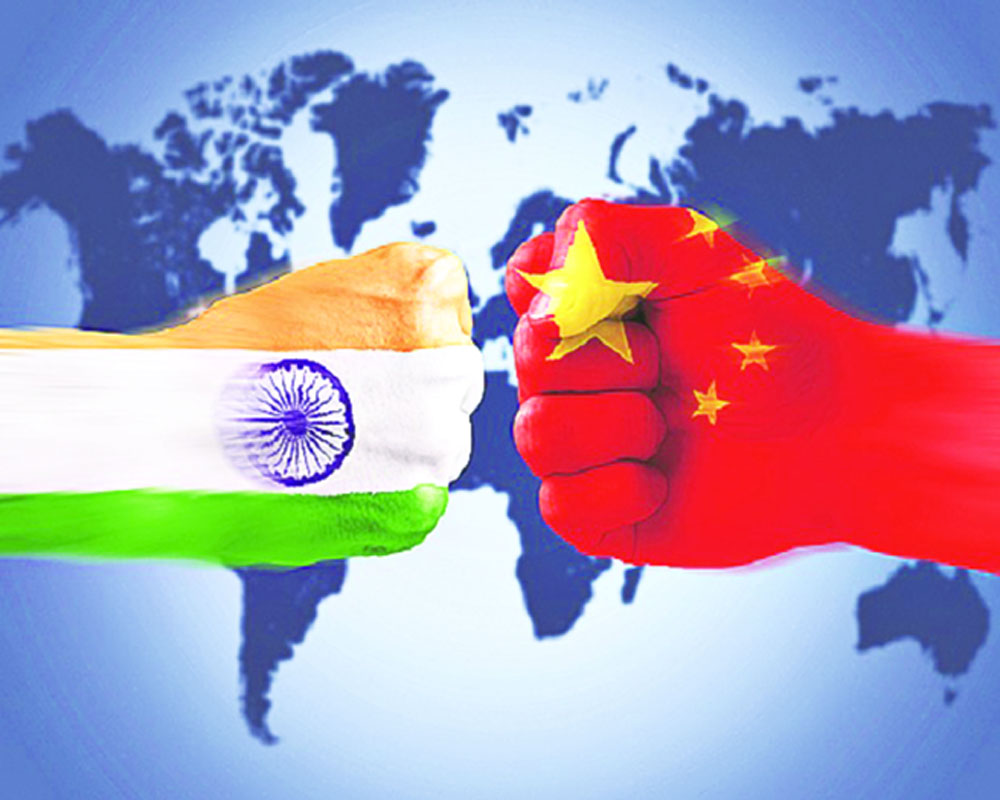
Economics behind Chinese politics in Ladakh
by Opinion Express / 27 June 2020
After the Chinese built up a massive industrial base, they needed markets and raw materials and this has made them imperialist
All sorts of things are being said about the happenings in Ladakh. Prime Minister Narendra Modi initially said there was no incursion into Indian territory but later modified his statement when confronted with undeniable facts about the Galwan Valley. So what is the truth? The truth is that satellite images have shown that undoubtedly Chinese troops have intruded into Galwan Valley, Pangong Tso, Hot Springs, Demchok and Fingers four to eight, which were not earlier in their control.
As Lieutenant-General Panag, former General Officer Commanding-in-Chief, Northern Command and noted defence analyst pointed out, the Chinese have captured at least 40 square kilometre of Indian territory. Why? To understand this, one must go a little deeper and understand that politics is concentrated economics. So to understand politics one must see the economics behind it.
China may have been socialist at one time but today it is undoubtedly capitalist and imperialist. In fact, it is expanding imperialism and, therefore, more dangerous and aggressive than defensive imperialism (just as in the 1930s, Hitler’s expanding imperialism was more dangerous than British or French defensive imperialism).
China has built up a massive industrial base and with its huge $3.2 trillion foreign exchange reserve, it is hungrily looking for markets and raw materials and avenues for profitable investment, like an imperialist power. Mountainous areas like Tibet and Ladakh, appear barren, like Siberia, but like Siberia they are full of valuable minerals and other natural wealth. This is the reason China has captured Tibet and also parts of Ladakh. Using salami tactics, it has recently occupied Galwan Valley, Pangong Tso, Hot Springs, Demchok and other parts of Ladakh (having already occupied Aksai Chin in the 1960s). These areas have valuable minerals, needed by China’s growing industry and this is the real explanation behind the recent events. As stated above, politics is concentrated economics. There are certain iron laws of economics, which operate independent of any individual’s will. For example, why did the British conquer India? It was not for a picnic or for enjoyment. In fact, the British were miserable in the hot weather here. They conquered India because, after their industries had grown to a certain level, they needed overseas markets, raw materials and cheap labour. Similarly, what was the cause of the World War-I? It was for redivision of the world’s colonies. Since Britain and France had done their industrialisation earlier, they had grabbed most of the backward countries and made them their colonies, i.e. markets and sources of cheap raw materials and cheap labour. German industrialisation began later but soon caught up with the British and French, and then they, too, demanded more colonies. But the British and the French were unwilling to part with theirs and this resulted in the war. Why did Japan invade China and other countries ? To get raw materials and markets for its growing industry. Similarly, after the Chinese built up a massive industrial base, they needed markets and raw materials and this has made them imperialist. They have entered Asia, Africa, South America and even the developed countries.
But at present the Chinese are largely proceeding cautiously. They use largely economic measures, not military. However, they do sometimes use military measures, too, for coercion and they have built up a massive military. At present, they use salami tactics, advancing step by step.
This explains what happened recently in Ladakh in the Galwan Valley and other places they have occupied. In future, too, they will keep nibbling away parts of Ladakh and other Indian territory, obviously with an eye on the raw materials there (as they have done in the South China Sea).
It is reported that on June 22 talks took place between a Lieutenant-General of the Indian Army and a Major-General of the Chinese army, in which the former demanded a timeline for withdrawal of troops to two kms from the Line of Actual Control (LAC ) as it existed before the Chinese intrusion. The problem is where is the LAC? Whenever in the past the Chinese were asked by the Indian side to delineate the LAC on a map, they refused to do so, obviously because if they did so, their designs for future intrusion into Indian territory would be hampered. In view of what has been said above, it is highly unlikely that the Chinese will comply with the request of our Lieutenant-General. It is high time now that our leaders realise this and join hands with other countries like the US and form a united front against Chinese expansionist imperialism, just like the united front formed by Russia, the US, Britain and other countries against Hitler. That is the only way to prevent Chinese domination over us and other parts of the world.
It should be understood that China is much more economically developed than India (some people say it is five times so) and military strength comes from economic strength. China’s military is, therefore, undoubtedly superior to ours (we can’t even make our heavy weapons like artillery, tanks, aircraft and so on while the Chinese have developed the technology for it). So we will not be able to face the Chinese alone and need to join hands with the other major powers of the world. The US is already moving its forces away from Europe and into South Asia in an attempt to counter Chinese aggression. We should take advantage of this. Some say that the problem can be solved by diplomacy. This was the view of the then British Prime Minister Neville Chamberlain, who thought that negotiating with Hitler at the Munich Conference in 1938 would avert war, not realising that appeasement only whets the appetite of the aggressor. So diplomacy will be useless.
Our Government should do two things immediately. It must expel all Chinese companies operating in India and ban sale of Chinese products in the country. It must form a united front with world powers and boldly confront Chinese imperialism. This alone can thwart Chinese aggression.
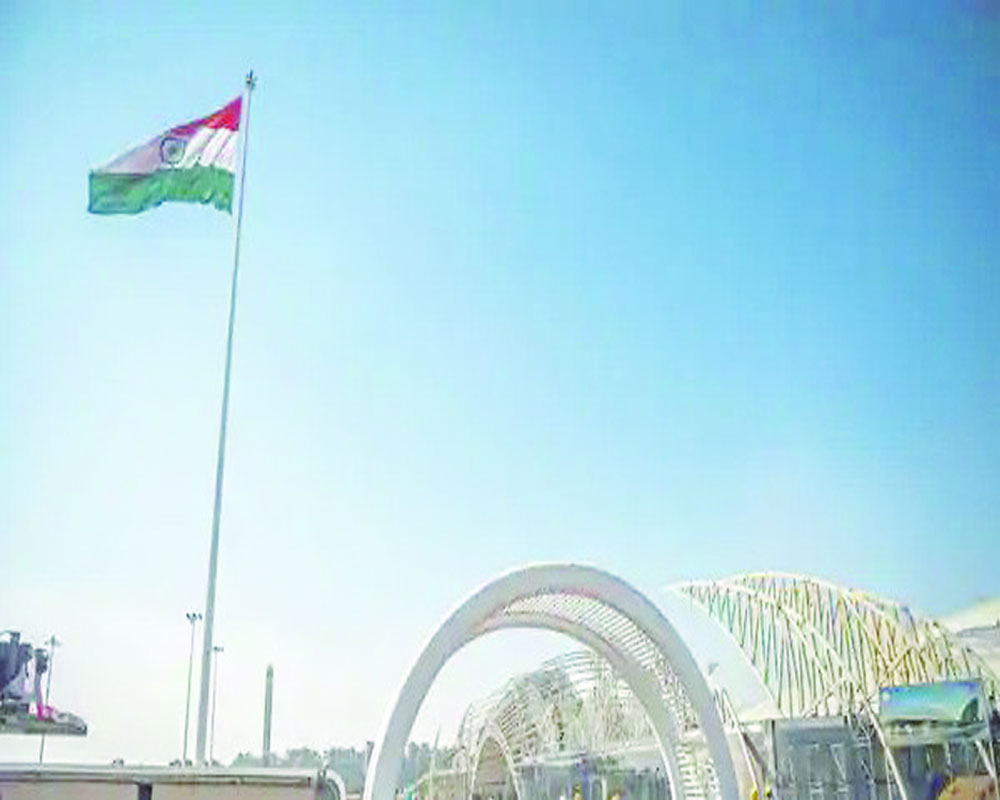
India’s counter strategy
by Nishikant Dubey / 26 June 2020
India must take the lead in the South Asian region by accelerating economic activities and involving other nations in integration projects. This can serve as a deterrent to China
Ever since independence, India’s stated objective in the South Asian region has been to pursue friendly relations with its immediate neighbours. An official foreign policy planning document published by the Congress regime in early 1992 states that India respects the territorial integrity of its neighbours and intends to work for mutual cooperation on a bilateral basis. Our attempts to build a solid and constructive relationship with neighbouring nations have been successful. India shares land and maritime boundaries with nine countries: Bangladesh, Bhutan, China, Maldives, Myanmar, Nepal, Pakistan and Sri Lanka and Afghanistan from Pakistan-occupied Kashmir (PoK). In particular, Pakistan and China have come to challenge India’s sovereignty on a regular basis. The traditional friction between India and Pakistan in my estimation is the principal threat to regional stability in South Asia. Mutual distrust and lingering hostility have provoked four wars between the two countries since 1947. However, India holds superiority in military strength in the foreseeable future. A major stumbling block to long-term improvement in relations with Pakistan is its infiltration into Kashmir and regular proxy wars here in cohorts with various terrorist organisations.
On the other hand, for India, China, too, has been a long-term threat. Our security concerns with it begins at the Himalayas and our forces have steadfastly resisted all attempts of invasion by the People’s Liberation Army (PLA). In recent times, China appears to be less interested in resolving boundary issues and has instead become more assertive about claiming various regions of Ladakh and the North-east. First came an attempted inroad into Doklam and more recently the face-off at the Galwan Valley. All such skirmishes have necessitated a relook at India’s Tibet policy. In particular, two unilateral concessions have been made: First, we supported the One-China policy. And second, we accepted China’s sovereignty over Tibet. However, during the British era, Tibet was an independent nation and the British Government was the guarantor of its independence from China. The rights India retained in Tibet under the Simla Convention of 1914 were adequate for us to insist upon the maintenance of its autonomy. Britain preserved all these rights in Tibet as an autonomous region was vital for British India’s safety and security. However, in 1954, Nehru conceded Tibet to China to “maintain regional stability.”
The Indo-Bhutan Treaty of Peace and Friendship of 1949 and the 1950 Indo-Nepal Treaty of Peace and Friendship were signed in continuation with similar pacts issued by British India. The 1816 Treaty of Sugauli with Nepal, the Treaty of Punakha in 1910 with Bhutan and the Simla pact of 1914 with Tibet continued after India’s independence and it was former Prime Minister Jawaharlal Nehru’s duty to uphold the listed treaties. Thus, Nehru’s decision to forego Tibet’s sovereignty and boost China’s imperialistic mindset was illegal.
On multiple accounts, India followed the “Panchsheel” principles, an agreement solely responsible for bringing instability to South Asia and the growth of China’s imperialistic mindset. The two mistakes Nehru committed in violation of the Panchsheel Agreement were: First, in 1954, he supported China’s claim to Tibet and the Aksai Chin to “maintain regional stability.” Second, in 1955, in an attempt to befriend the USSR, Nehru supported its claim over Hungary at the UN.
These two decisions have had drastic effects on India’s foreign policy, its relations with other countries and its ability to maintain sovereignty. When China attacked India in 1962, the USSR did not come to India’s aid as Nehru had expected. This because China was a communist state. The rest of the world did not help India since it had supported the USSR at the UN against NATO and its allies.
China followed a three-pronged approach to destabilise the region in the early 1950s.
Economically: China is the biggest trading partner for a number of neighbouring countries. This helps it gain political leadership in the South-Asian region. This is evident from the way it deals with Pakistan, Sri Lanka, Myanmar, Nepal and Afghanistan. All these nations have been provided with funds worth billions of dollars for the completion of key projects, to settle border disputes and use their sovereign land for China’s military outreach.
Militaristically: China invaded Tibet in the 1950s and has unsuccessfully attempted a similar approach with India and Bhutan during the past half-century or so. It has mocked the maritime sovereignty of other countries by expanding its borders in the South China Sea and restricting the ability of countries like Japan, Taiwan, Philippines and Vietnam to conduct trade.
Intimidation: China attempts to resolve border issues only when it feels insecure. The demarcation of the border between Russia and China started after an agreement in 2004 and the projects were completed in 2009 after war-like threats. Likewise, China and Vietnam completed demarcation of their border in 2009 in a similar fashion.
It is time that India supports Tibet’s claim of being an independent nation. Since China has not been acting in accordance with the international treaties signed by it (the Chinese agreed to grant Hong Kong autonomy till 2047), why should India act in accordance with any bilateral agreement it has with China? India can propose a Himalayan economic zone comprising Tibet, Xinjiang, Nepal, Bhutan and the Indian Himalayan regions. Common Buddhist heritage should be a factor in the creation of this economic zone. India can encourage tourism to Buddhist sites in India and build closer defence relations with Japan, Myanmar and Vietnam. Our planners should increase defence operations in Arunachal Pradesh, Ladakh, Sikkim and the joint Andaman and Nicobar as a deterrent to the Chinese moves in the Himalayas and Bay of Bengal in retaliation to India’s noble efforts.
The pace of socio-economic activities in South Asia will accelerate if India becomes a key factor of this change. The other problem in the region is uncontrolled population growth. The population of South Asia is set to increase from about 1.8 billion to over 2.5 billion by 2050. This will cause tremendous stress on the already stretched resources and create highly concentrated areas, incapable of sustaining human populations. This will also undoubtedly lead to mass starvation and inhuman living conditions. We should accelerate the process of economic cooperation and involve other nations in regional integration projects. In the light of these changes, India’s foreign policy would face several challenges and would require a broader approach.
Domestic factors will increasingly influence foreign policy and Prime Minister Narendra Modi is aware of this. He is attempting to protect the interests of the people in India’s bordering nations. He has not only been hearing and understanding people’s issues but has also addressed them. Terrorism, organised crime, human trafficking, cybersecurity and Weapons of Mass Destruction proliferation continue to pose challenges to Indian security. Dealing with such challenges requires an effective counter-terrorism policy. A forward-looking approach on cooperation with neighbours to manage the borders, cybersecurity, science and technology, agriculture, education, culture and capacity-building is needed. This will meet the challenges of terrorism and of non-traditional security.
On various fora, India has created committees dedicated to resolving issues regarding national security and regional peace. South Asia cannot remain immune to the developments in the extended neighbourhood and the world in general. Thus, our neighbourhood policy is bound to be affected by developments elsewhere. It is vital that India connects with the Gulf, Central Asia, South-East Asia, and the Indian Ocean islands to ensure that its neighbourhood policy remains unaffected.
If India is able to create regional stability in the region and raise the demand of Tibet’s independence in accordance with the Simla Pact, especially when resentment against China has increased owing to the COVID-19, it will be able to muster the support of Western and South-East Asian powers alike in its attempt to abolish China’s imperialist mindset. In the coming years, China will also find itself in the midst of an economic crisis due to numerous businesses shifting to either India or other South Asian nations. A two-pronged approach will force China to resolve border disputes with India. In the game of cricket, there is a saying, offence is the best defence. India should initiate the offensive against China for its territorial defence and for stability in South Asia.
(Writer: Nishikant Dubey; Courtesy: The Pioneer)

Prepare now for what lies ahead
by Rajinder K Dhamija / 25 June 2020
We need to plan for the multiple waves of the pandemic that will hit us once the Indian economy opens up completely
Pandemics historically behave in a set pattern with a few exceptions and occur in multiple sequential waves. Containment and mitigation measures, which slow the contagion’s spread, are the only options initially as there are no cures or vaccines available for new pathogens. However, these containment measures leave people vulnerable to infection once the restrictions are withdrawn, because the virus is not treated but only contained. The Spanish Flu in 1918 had a second wave a few months later and proved more deadly, causing between 20-40 million deaths. It re-emerged in 1919 causing further fatalities. Similarly, the 2009 Swine Flu also had a second wave in the US after a few months. A second wave is due to either sudden exposure of the virus to the susceptible population or possibly due to mutation in the virus’ genome. Thus, the four-pronged strategy of hand and respiratory hygiene, physical distancing, mask wearing and self-screening is vital now that the economy is opening up. The last measure is very important in the containment strategy. People should stay at home in case they are unwell and get themselves tested before they start moving out. This is crucial to break the chain of transmission of the Coronavirus.
The pandemic is still evolving in India and likely to move from high socio-economic zones in the coming days. We have to prevent this at all cost. We have now more than three lakh cases with a three to five per cent daily surge. This, when extrapolated to the total population, comes to about 224 cases per million population. However, a city like Delhi has about 1,500 cases per million population, which is seven times more than the national number. We are doing 3,800 tests per million on a national level and this varies from State to State. This is low if we compare it with the US testing close to 70,000 per million and Brazil close to 98,000 per million. The important thing now is to test more, isolate those found positive and go aggressively for contact tracing and quarantining to mitigate the virus’ spread.
Australia has been successful in combating COVID-19 with only 19 active cases admitted in the country as of today. Their numbers speak for themselves with a total of 7,290 confirmed cases, 102 deaths and 6,783 recoveries till date. This is a key comparison as Australia and India have a similar number of cases per million (286 and 224 respectively) as well as a similar number of deaths per million (four and six respectively).Though one may argue about the advantages of a smaller population, yet Australia’s strategies of aggressive testing, contact tracing and quarantine have paid dividends. Australia has conducted about 17.5 lakh tests (78,000 per million) with a positivity rate of 0.4 per cent as against our testing rate of 3,800 per million.
The average testing rate in Delhi is over 15,000 per million which is less compared to the number of cases and the national testing average. It needs to be more than 30,000 tests per million as of now and more in coming days. The positivity rate in Delhi has gone up to 30 per cent and this again is an indication for more aggressive testing. We need to involve more private labs and ease the testing eligibility criteria. In fact all high-risk individuals like doctors, nurses, ambulance drivers, paramedics and the family members of Corona patients should be tested and isolated in order to contain the surge. In view of an expected jump in cases in the near future, there would be a huge demand for beds and therefore banquet halls, indoor stadia and similar facilities should be converted into makeshift hospitals with the help of the armed forces who have the expertise in it. This was done in Wuhan, New York and in Europe.
Private hospitals need to participate in this war and can contribute by diverting 50 per cent of their ICU beds and general beds for Corona patients as against the 20 per cent right now. There must be one central system of allocating public and private hospital beds for better utilisation and greater transparency. The private healthcare system also has trained manpower to run this augmented capacity, be it testing or critical care. This revamp is crucial to saving each life. Sero-epidemiological surveys for April have revealed that less than one per cent of the general population and about 20 per cent of the people in containment zones might have acquired the virus. This indicates that the infection is still on the rise. It is important to keep the level of infections in the community low until a drug/vaccine is developed and is available for mass distribution/immunisation.
Although many countries have been successful in flattening the curve and contained the spread of the virus, they are looking at a potential resurgence of the virus spread once restrictions are eased out. China has witnessed new infections in the last few weeks, so has Singapore. Though it has been seen mainly in migrants and foreign workers in congested dwellings in Singapore but it is being seen as a second wave of the pandemic. Elsewhere, in some countries, a few COVID-19 patients are becoming positive again possibly due to reinfection, casting a doubt over the immunity gained due to this infection. We need to plan ahead for the multiple waves that will hit us once the economy opens up completely. We need to proactively chase the virus at the same time rather than the virus chasing us.
(Writer: Rajinder K Dhamija; Courtesy: The Pioneer)
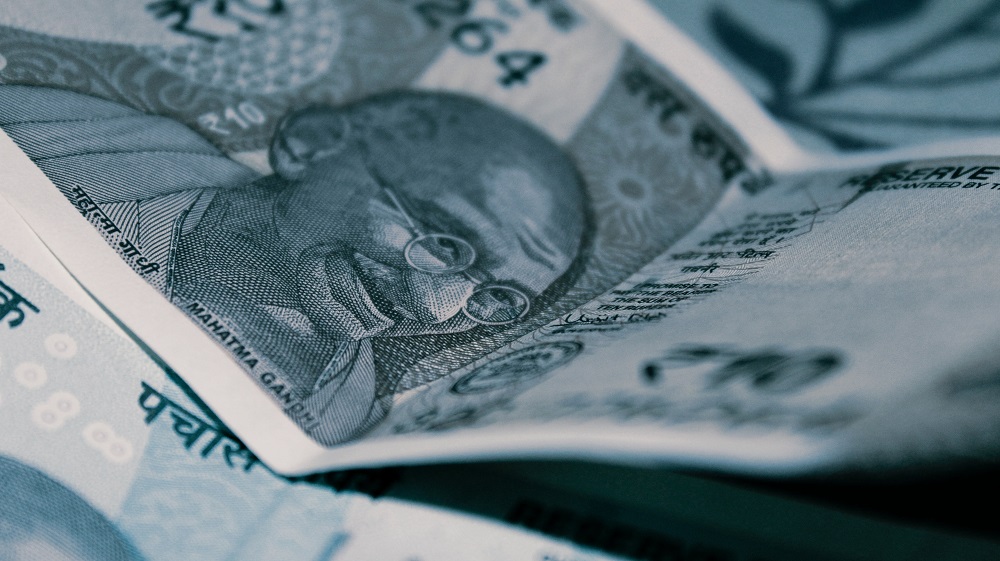
A highly unreasonable request
by Uttam Gupta / 23 June 2020
Granting interest waiver, in addition to deferment, will amount to discrimination among borrowers who decide to avail the RBI’s loan moratorium and others who don’t
The Supreme Court was against burdening customers with a loan trap while hearing a Public Interest Litigation (PIL) filed by one Gajendra Sharma, demanding a “waiver on interest charged” by a bank citing the relief given by the Reserve Bank of India (RBI) on the payment of equated monthly installments (EMIs) during March and August 31 due to the pandemic. A three-Judge Bench of the Supreme Court observed: “There is no merit in burdening customers, who have opted for the RBI-approved loan moratorium, with additional interest. Once you fix a moratorium it should serve the purpose desired. We see no merit in charging interest on interest.” The Bench, which posted the matter for hearing in the first week of August to allow the Centre and the RBI to review the situation, asked the Indian Banks Association (IBA) to examine whether they could bring new guidelines on the issue of loan moratorium. From this, it would appear that the apex court may be concurring with the petitioner. It believes that without granting interest waiver on the amount remaining unpaid during the moratorium period, the very act of granting it is rendered meaningless. This is reinforced by another observation by the Bench, “On the one hand, you are granting moratorium (on loans) but continuing with interest. It is more detrimental.” As we await the court’s order we need to address some pertinent questions.
What did the RBI offer to the borrowers? What did it cost the banks and how will interest waiver impact them? How will bank depositors be affected? Let us check a few facts. On March 27, the RBI Governor announced a comprehensive action plan to resuscitate the economy. Among other things, the plan sought to ease the stress of loan repayments on businesses and individuals and this included a three-month moratorium on payment of installments in respect of all term loans outstanding on March 31.
As the lockdown continued much longer than it was initially envisaged on May 22, the Governor announced extension of the moratorium for another three months till August 31. He also allowed those who availed of working capital facilities to convert accumulated interest for the deferment period (March 1 – August 31) into a Funded Interest Term Loan (FITL) which can be paid by March 31, 2021.
The RBI also eased asset classification norms for all accounts coming under the moratorium. These accounts will be treated as non-performing assets (NPA) from 270 days overdue instead of 90 days overdue as per extant rules. It has also extended the 210-day resolution period for all large, stressed accounts under its June 7, 2019 circular. On its expiry, if banks are not ready with a resolution plan, the Insolvency and Bankruptcy Code (IBC) comes into play by a further 180 days.
The RBI has thus taken all necessary steps to shield Covid-19 affected businesses and individuals from going into default and negative consequences such as a loan becoming a NPA or proceedings under the IBC that go with it. It has also eased the burden of paying back accumulated interest for the moratorium period. There could not have been a more generous relief package. This has come at the cost to banks who will be required to make additional 10 per cent provision on these so-called “standstill” accounts (albeit borrowers who decide to avail of the moratorium) over three quarters ending March, June and September. Yet, borrowers are dissatisfied and are demanding waiver of interest, too, arguing that the latter is meaningless without the former. The apex court is concurring with this interpretation.
However, this interpretation may not hold ground because the moratorium is actually a “deferment” of existing and current liabilities. It means that for now, keeping in view the prevailing excruciating circumstances, the borrower need not pay for the specified period. But, it does not alter any of the other covenants in his loan agreement with the bank. If, he decides not to pay interest during the moratorium period, “the interest accrued on the unpaid interest amount” will have to be paid by him.
Granting interest waiver (in addition to deferment) will amount to discrimination among borrowers who decide to avail of the moratorium and others who don’t. There are a large number of borrowers in the latter category as can be seen from the following numbers reported by the largest Public Sector Bank (PSB) viz. the State Bank of India (SBI). According to the SBI, over 80 per cent of its retail borrowers did not avail of the moratorium for two out of the first three months initially allowed by the RBI. Further, 90 per cent of such borrowers did not avail of the moratorium for one month. In other words, they continued to pay the EMI. If, the Supreme Court grants interest waiver, are we then to infer that those who have already paid their EMIs will get refund of the “interest on interest” from the bank? If they don’t (very likely) then we will end up with two sets of borrowers viz. one who availed of moratorium and got interest waiver too and the other, who got neither just because he decided to pay.
Plus, loans worth Rs 40,00,000 crore are eligible for the six-month moratorium allowed by the RBI. Taking the average lending rate at one per cent, the interest cost for six months works out to about Rs 2,00,000 crore. This will be the loss to banks if the court allows interest waiver for the moratorium period. But, the buck does not stop here. The banks give loans using depositors’ money. If, the former suffer a loss, this will impact the latter by way of reduction in the deposit rate. There are millions of depositors who depend solely on interest income for their survival. Already, in a declining rate scenario (this was even before the Corona crisis), they have suffered heavily. The interest rate on the Senior Citizen Saving Scheme, which is normally kept immune from market-driven variations, too, has declined by over two per cent in the last couple of years. The crisis has aggravated their woes. To give relief to a certain section of society at the cost of another will be discriminatory.
To argue that deferment of an existing liability per se is no relief is untenable. If, someone is passing through a difficult phase (say, in case of this petitioner whose shop remained closed during the lockdown) and he is exempted from having to pay the EMI during this period, which is what the RBI has done, this by itself is unquestionably a big relief. While he will be happy to get interest waiver as well, that does not take away from the fact that he got a huge relief.
What if the Centre decides to pay for interest waiver? It can do so for PSBs only and this won’t be possible in case of private banks. This will lead to an anomalous situation whereby someone who has taken loan from a private bank won’t get the benefit of interest waiver. That apart, the Government needs to decide whether it can afford this when it needs to keep its scarce (and dwindling) resources for the basic needs of the poorest only. Hopefully, the apex court will see the inherent flaw in allowing interest waiver for the moratorium period and dismiss the demand made by the petitioner.
(Writer: Uttam Gupta; Courtesy: The Pioneer)
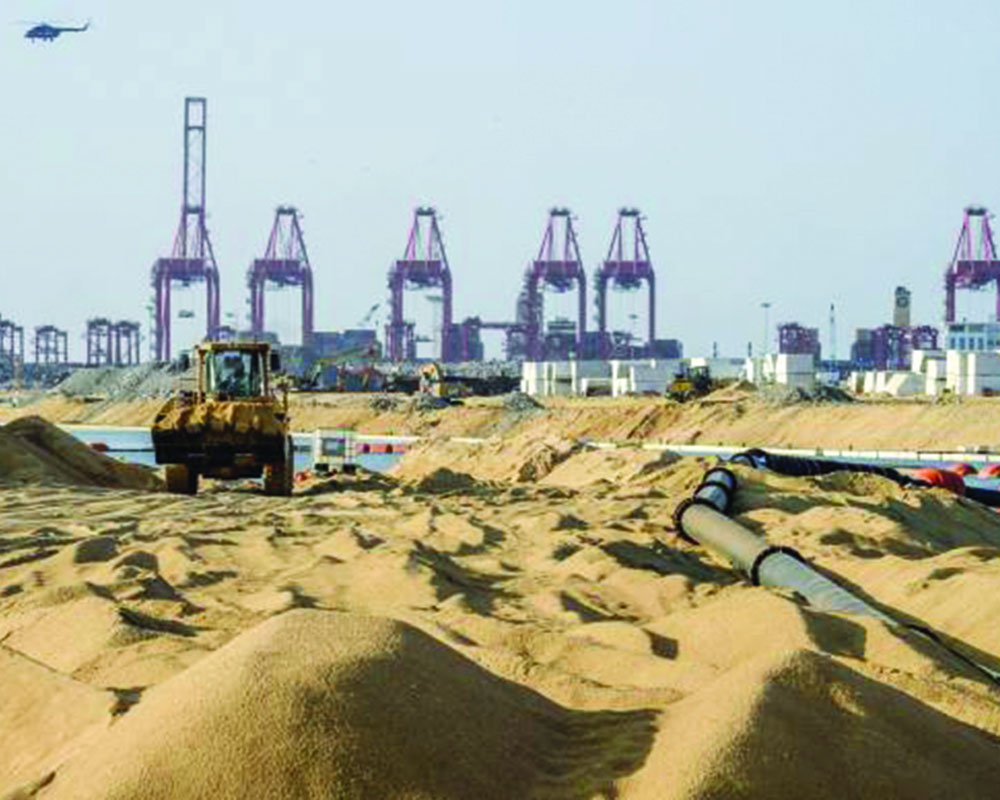
China’s BRI trap
by Sandhya Jain / 23 June 2020
As its domestic strain increases, Beijing may turn more aggressive abroad to show that it is unperturbed by the pandemic or slowdown. That its chutzpah is unparalleled
The unbearable tragedy at the Galwan Valley has little to do with territorial claims and is instead a distraction “with Chinese characteristics” to cover the fact that Chinese President Xi Jinping’s flagship project, the Belt and Road Initiative (BRI), is floundering. At the National People’s Congress in May this year, Beijing announced a military budget of $178.6 billion for 2020 and said it would grow by 6.6 per cent year-on-year, while foreign affairs spending was cut by 11.8 per cent. The military budget stood at $175 billion in 2018 and $177.5 billion in 2019. Helena Legarda, analyst at the Mercator Institute for China Studies (MERICS) mused, “Beijing clearly does not feel safe enough domestically or internationally to slow down its military buildup and modernisation, even at a time when the economy is suffering.”
China’s outstanding debt claims are estimated at $5.5 trillion, that’s 40 per cent of its Gross Domestic Product (GDP), according to the Institute of International Finance. The institute estimates that China’s debt-to-GDP ratio rose by 11 percentage points in 2019 and is now pegged at 317 per cent. It could be higher as the calculations do not include all categories of debt. Moreover, China’s reported GDP seems too high and the excess of liabilities over assets of China’s financial institutions has not been factored in.
Data for the first quarter of 2020 showed a hike in bad loans, defaults and delayed repayments as the Coronavirus hit the economy and first-quarter GDP shrank for the first time in China’s recorded history. The rise in defaults was despite lenders agreeing to delay $124 billion in repayments from smaller companies. The International Monetary Fund (IMF) predicts the Chinese economy would grow only 1.2 per cent in 2020-21 as against 6.1 per cent in 2019-20. However, at the National People’s Congress in May 2020, Premier Li Keqiang said China would not set a target for GDP growth for 2020-21. He announced a stimulus of $672.4 billion, which many considered inadequate but China cannot afford more debt.
China’s economic slowdown began before the Coronavirus pandemic derailed the world economy. After the second Belt and Road Forum meeting in Beijing in April 2019, several Western think-tanks scrutinised BRI finances from public records and found an opaque web of reckless lending, restructured loans, renegotiated loans, debt forgiveness, refinancing and deferrals. Now, Zou Jiayi, Vice Minister at the Finance Ministry, who repeatedly warned about the debt risks from the project, has been asked to make the BRI “more manageable and financially practical.” Observers expect it to be sharply downsized, with viable projects getting priority and the rest ignored. The objective is to somehow avoid a massive default.
The BRI has become fiscally unsustainable because China’s policy banks gave huge loans to fragile States and then extended and even expanded credit lines. The Washington-based consultancy, RWR Advisory, notes that around $461 billion has been given for transport and energy projects from the Horn of Africa to Central Asia from 2013 under the BRI umbrella.
China’s total lending to African Governments, firms and State agencies is around seven per cent of its external debt, valued at $2.06 trillion at the end of 2019 by China’s State Administration of Foreign Exchange. Ernst & Young estimates that Chinese firms invested $72.2 billion in Africa between 2014 and 2018. Herbert Poenisch, former senior economist, Bank for International Settlements, put the total outstanding lending by Eximbank in all countries at $285 billion. Hong Kong-based bankers believe that possibly the Government “does not know how much it is owed or by whom.”
Lending slowed down even before the COVID-19 shock. Logan Wright, director of China markets research at Rhodium Group, reported that net outbound lending has been negative since 2019; lending by mainland policy banks to Africa dropped after peaking at $29 billion in 2016. Commerce Ministry data showed that the number of overseas contracts signed by Chinese construction firms for BRI-related lending fell sharply in 2018, reflecting the growing unease in Beijing that the BRI was “way out of control.” A Hong Kong banker said that by 2019, China had exhausted its ability to maintain the momentum. Beijing’s solution to fund BRI by lending in renminbi did not work as most borrowers only wanted dollars.
This compelled China to increase its dollar-denominated external debt. The COVID pandemic put Beijing in the unenviable position of being asked to forgive some, or even all, of its loans. At the G20 in April 2020, China offered to freeze all debt repayments for the world’s poorest countries until end-2020, the first time Beijing joined a global debt relief initiative. But it refused to include distressed loans disbursed by Eximbank or China Development Bank in the G20 programme. Analysts expect massive downscaling of the project. A few new and viable projects will be launched; the rest sidelined. Lending to Africa will be tightly controlled, but gaps could be met by “new actors” such as technology firm Huawei.
The Coronavirus has made it impossible to ignore the warnings. The Bank for International Settlements warned in 2016 that excessive credit growth in China posed the risk of a banking crisis within three years. In December 2017, the IMF warned that China’s growing debt-dependency could trigger a new global financial crisis as credit growth had outpaced GDP growth, corporate debt was 165 per cent of GDP and household debt had risen by 15 percentage points of GDP over the past five years.
Columnist Gordon G Chang believes that China’s foreign exchange reserves could be less than claimed as there have been derivative transactions to hide the quantum of dollar selling to support the renminbi and stuffing of non-liquid investments into its reserves. The increased budget of the People’s Liberation Army (officially by 6.6 per cent) is an extra burden though deft management has marginally increased foreign exchange reserves to $3.09 trillion in April 2020 from $3.06 trillion in March 2020.
As its domestic strain increases, Beijing may turn more aggressive abroad — Ladakh (India), South China Sea, near Taiwan — to show that it is unperturbed by the pandemic or slowdown. Its chutzpah is unparalleled. In June 2020, Naypitaw discovered to its chagrin that China is covertly building a Hong Kong-size city in Shwe Kokko fishing village in Kayin State, on the banks of Moei river, its border with Thailand. Possibly it would be used to leverage Myanmar debt at a future date.
(Writer: Sandhya Jain; Courtesy: The Pioneer)

It is time for focused action
by Vinayshil Gautam / 22 June 2020
We need a proactive policy effort based on post-pandemic realities of the country’s economic potential
Covid-19 is probably one of the topics about which more has been written and spoken than perhaps any other subject in the last several months. The subject itself would be suffering from some kind of “author’s fatigue.” Content wise, the articles have little more to say than perhaps reflecting philosophically or administratively on certain categories, policies or more. All this is a part of life and several media fora flourish on this. So be it!
On May 25, in a write-up titled Impenetrable Barriers in these columns, a description had been put forth on the logic and birth of the concept of the National Capital Region (NCR). It pointed out how an over-anxious administrative zeal on the part of some in the affected NCR States had created impenetrable boundaries, barricaded with permits. For weeks, misguided zeal, an ill-informed search for solutions and an urge for seeking applause had created a state of competitive “statism.” Uttar Pradesh, Rajasthan, Haryana and Delhi took turns to make the life of average law-abiding citizens hapless, forcing them to try and build bridges in an attempt to integrate divided lives across barricaded State borders. There is at least some data on faulty test kits, alternate test kits, the number of people tested and the number of people who ought to be tested but there is no data available on how many suffered and in what manner, (all in the name of containing Covid-19) due to the closure of State borders. It may be recalled that much of this was post the lockdown phase of Covid-19.
Bless the Home Minister of India, who announced from a forum on June 18 that NCR for the purposes of the present concerns and more, should be seen as one unit. In matters like this, no credit needs be claimed but one needs to count one’s blessings. Since the Home Minister made this announcement, at least, the comparative babble of containing the virus through entry passes seems to have receded. What the future will bring remains to be seen.
The truth is, that as of now, the only instruments of containing Covid-19 are the common sensical ones of basic hygiene, social distancing, wearing masks, avoiding crowded events and the like. This is no rocket science. All diseases would be better controlled with these measures. Only in the case of Covid-19, they seem to be the only route. The drug and pharmaceutical options are clearly months away even though there has been some progress in the right direction. Of course if you are rich and powerful or both, you can get into a hospital where your influence or money could move the treatment from one to the other of the five-six options available and hopefully, something would work.
Earlier in this text, there have been references to a kind of fatigue that is setting in with all Coronavirus-related issues. A similar fatigue is setting in on social media platforms too. Messages and jokes on strained husband-wife relations on account of the “absconding” maid are becoming fewer, wisecracks on domestication have significantly reduced and spaces so vacated are being taken over by China-bashing and posts on rejection of Chinese made goods and so on.
The kind of leadership shown by the Home Minister could be emulated by the Finance Minister. Few will doubt her attempt to try but it becomes more effective if the attempt is focussed. Doling out money in its various incarnations, including in the so-called bailout plans for the banks, in the past, did not work. Now the fond hope is that if you cut down the EPF share of the working individual and thereby put more money in the people’s hands, the economy would boom. Even an undergraduate student of economics would know that this is the classical case of misconceived economic corelation. There are other options of course. Clearly, all is not lost on the economic front. Some of the sectors of the pharma industry are poised for big gains. That gain itself may be coterminous with Covid-19. The important thing is to select lines of pharmaceutical industry, which are prone to multiple drug formulations from an assortment of drug research streams. Those who have dealt with technology-oriented start-ups know that it is doable. At the policy level, both at the Centre and at the States, this could be done. It could be done by channelising of funding in a sectoral mode. However, this can only happen if focussed policy frameworks modulate the propensity to chase the last wagon of the train.
Now that it is obvious that, whether officially accepted or not, 2020 is a “zero year”, there needs to be some attention on a proactive policy effort focussed on the realities of the economic potential. Our success in the motorcycle sector, especially in the manufacturing of its component parts, is a good example. It establishes what Indian acumen can do with a little bit of support and some encouraging policies.
(Writer: Vinayshil Gautam; Courtesy: The Pioneer)
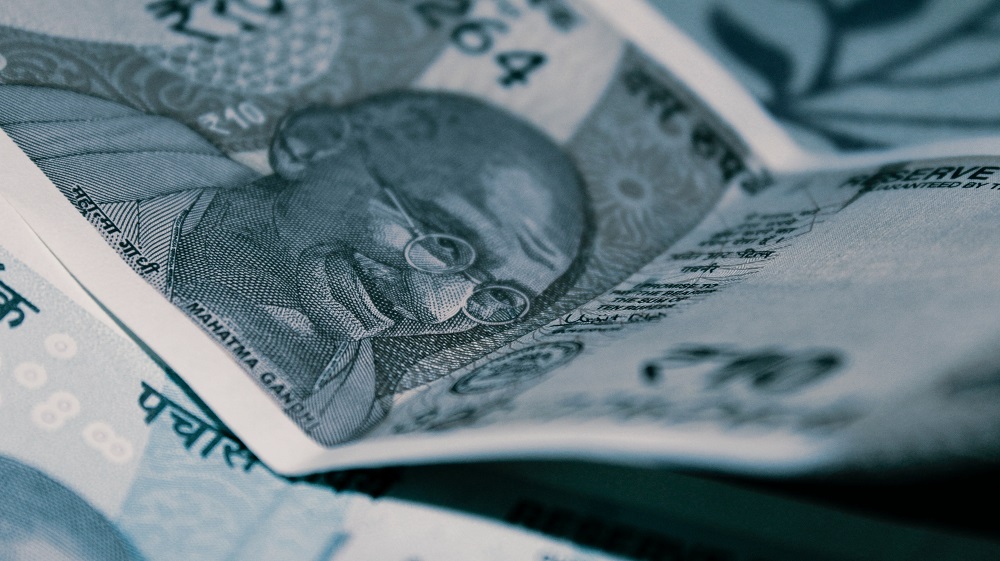
The challenges of a post-lockdown economy
by Abhishek Raja / 19 June 2020
If these conditions of job uncertainty and low demand sustain, the economy could enter a recessionary cycle. People might defer non-essential buys thus killing recovery
The impact of the pandemic on the economy has been acute and the Reserve Bank of India’s (RBI’s) Monetary Policy Committee (MPC), led by Governor Shaktikanta Das, recently said it was important to take into account the weak growth momentum. It pointed to the need for prioritising growth in view of the less- risky inflation outlook, while also ensuring that financial conditions remain benign when a recovery takes place, in order to sustain confidence.
The future: Though the MPC refrained from providing any forecast on the Gross Domestic Product (GDP) growth, members said they expect the economy to contract in the current fiscal year and noted that agriculture and allied activities have provided the only silver lining till now.
Chief Economic Advisor Krishnamurthy Subramanian also spoke about the downside risk to the economy and GDP contraction in the first quarter (Q1) of the Financial Year (FY) 21. He further said that this would lead to a fiscal deficit of over five per cent of the GDP in FY21. For FY20, the fiscal deficit came in at 4.6 per cent of the GDP, compared with the revised estimate of 3.8 per cent and the Budget estimate of 3.3 per cent. It had breached the 0.5 per cent escape clause, which the Fiscal Responsibility and Budget Management Act, 2003 (FRBM Act) allows.
A complex economy: Now, as India begins to open up after a prolonged lockdown, hotels, restaurants and other hospitality services and shopping malls have been permitted to open. The lockdown, however, will continue in containment zones till June 30. High-frequency data is already showing a pick-up in activity in the Indian economy and the easing of the lockdown is a clear positive. But actual recovery depends on the positive mindset of the people and their purchasing power. India’s growth story is basically a consumption-based one. India has a multi-layered economy with the rural-urban economy on one hand and the organised-unorganised one on the other. This makes the situation challenging for anyone to come up with one simple solution which would work. Hence, solutions should also be multi-layered and ones that can be woven into another solution best suit the need of the Indian economy.
The ground reality: Many people have lost their jobs due to the lockdown and many have experienced salary cuts. This might lead to a structural change in business because we might encounter a situation where consumers start spending on essential items only. Plus, even though malls have opened, it will be a while before people start thronging them because of the need for social distancing. In such a situation, the big gainers will be the e-commerce firms.
The guidelines for the much-hyped collateral-free and automatic loans, too, are yet to reach bank branches and MSMEs are literally struggling to get their share. In this situation, interest and capital subsidy to such loans could be provided by States, too. We have seen all support to businesses coming from the Central Government but nothing from States. When taxes are collected by States, it is disheartening to see them shying away from their responsibility to support regional businesses during a crisis. If these conditions of job uncertainty and low demand sustain, the economy could enter a recessionary cycle and people might end up deferring all non-essential expenditure, which would kill short to medium-term recovery.
The way forward: The Government should provide relief on interest, late fee and penalty on both Direct Taxes and Indirect Taxes. The Goods and Services Tax Council should waive any sort of late fee and penalty and make provisions for refunding the same. Waiver of interest for the moratorium period will also help the cash-starved middle class.
The Government should understand that recovery will not come in the short term and, therefore, to speed up the process, it should hike capital expenditure and announce some big projects.
Alternatively, when the Government can see that demand has collapsed and growth in FY21 is headed towards negative territory, then instead of infusing more liquidity by reducing repo rates, loans and so on, the Government should start taking fiscal measures. All the measures the Government has taken till date are mostly on the supply side and not the demand side.
Before the pandemic struck the world, India was facing an economic slowdown and last year, too, the actions taken by the Centre to remedy the situation were on the supply side, like reduction in corporate tax rates, hoping for some investments from positive cash flows and saving from tax outlays.
The Government should also concentrate and channelise its efforts in welcoming companies moving out of China as India still continues to enjoy the trust of foreign investors and its banking system remains healthy. But that might not be sufficient to make the proposal lucrative. The Government has announced the setting up of a high-level Empowered Group of Secretaries, to be chaired by the Cabinet Secretary and a Project Development Cell (PDC) in ministries/departments with a view to attracting investments to the country. This is the right way forward but work should be done at a faster pace.
To deal with the current economic crisis, India must find the right balance between leaning towards a high fiscal deficit and ensuring financial stability. In all likelihood, the Government would come up with a fresh round of stimulus package in the short to medium-term. Only time will tell how deeply negative the growth will be. The economic situation is bleak but there is a silver lining in every crisis. We just need to find ours.
(Writer: Abhishek Raja; Courtesy: The Pioneer)
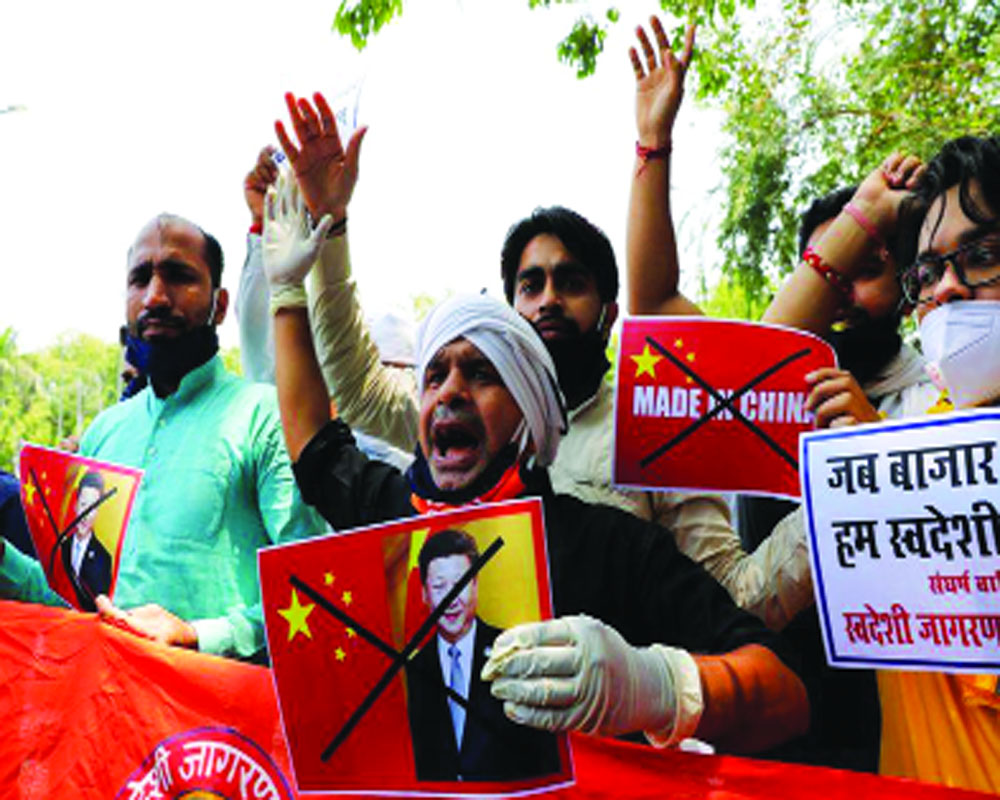
Economic hitback
by Opinion Express / 19 June 2020
Ladakh is forcing India to reduce dependencies. Rly, BSNL scrap projects despite asymmetric trade ties with China
The masks are off and the Wuhan spirit has all but evaporated. For China, at the receiving end of adverse world opinion in the pandemic era, doesn’t bother about good optics anymore. If the surprise medieval and almost bestial ambush by Chinese troops in Ladakh, risking the lives of their own men, and their stubborn refusal to restore status quo at Galwan Valley are any indication, then China is determined to push the salami-slicing of Indian territories on its terms, given the fluidic nature of the Line of Actual Control (LAC) on the ground, something it has steadfastly refused to codify for long. It shows that it will never renege on its border claims. And it has chosen India’s most vulnerable moment, when the pandemic is distressing our whole nation, to hold us down. Being the only nation that will ride out the pandemic without sliding to negative growth, with a high capacity war machinery and a desperate ambition to retain its supremacy in a post-pandemic world, it has allowed the escalation and may even prolong it within its affordable range. And Chinese President Xi Jinping, having lost the global perception of greatness by mishandling the Wuhan contagion, isn’t too concerned about another misstep at the moment, within controllable limits. So long as he can be a threatening big brother in the neighbourhood. He knows very well that despite India’s pro-US tilt of late, the Western superpower can hardly intervene on the ground except making grandiose statements and internationalising the context. Hong Kong is proof of such a propaganda war where rights protesters are facing the heat on the ground despite a global noise. So for all Western sympathies towards India post-pandemic, Xi wants to show that he can have the second biggest Asian power in his stranglehold and rob it of its comparative asset value. He can regain strategic edge along the Himalayan border that had been blunted by India’s rapid road-building and opening up of more Army conduits. China’s latest ingress means that it can monitor the road in the Galwan Valley that connects to Daulat Beg Oldi air base and keep a watch on Indian troops that are now favourably placed in many positions. China’s official English mouthpiece, The Global Times, warned that India could have to deal with multi-pronged border flashpoints from Pakistan and Nepal, too, if it stuck to its territorial claims.
But given the body bags that came back after the violent face-off, India has to stand up for its territorial integrity but do that smartly enough, graduating the incident to the highest level of diplomatic intervention. And encashing on the world’s favourable opinion towards it, the Government must publicise its reasonable rapprochement efforts globally to show why it is in the right and expose China’s naked territorial ambitions. Given the asymmetric nature of military and economic strengths between the two nations, India cannot afford an all-out conflagration at this juncture. Except for ground troop positions in the Himalayas, there is no parity in defence funding or resources. Economically, we are dependent on China for bulk supplies of pharmaceuticals, auto parts and electronics and while it may take long to build our manufacturing self-sufficiencies, fact is China, too, wouldn’t want to ignore our market potential. With a total trade of $85 billion, China is one of our largest trading partners. FDI from China was $1.8 billion between 2015 and 2019, some of them fuelling our start-up sector. Yet economic hitback could still be a deterrent. What began with the Government preventing opportunistic Chinese takeovers via FDIs in a pandemic-hit economy, continued with the Railways scrapping a dedicated freight corridor project with Chinese firms. The Department of Telecommunications has asked companies to consider reviewing future partnership with Huawei & ZTE. The state-run BSNL will no longer be using Chinese equipment for upgrading its 4G network. And while existing deals will continue and there’s no immediate danger of snapping economic relations that matter to both countries, future projects and 5G trial partnerships could be impacted. There would also be a progressive shrinkage of Chinese markets in India if the “boycott China” becomes an emotive surge among the masses, upset by the loss of soldiers at the front. Of course, going by China’s latest manoeuvres — increased patrolling in the Taiwan Straits, clampdown in Hong Kong — the latest offensive at LAC could be a short-term tactic to extract territorial concessions and tilting the balance of power in its favour while staying just beneath the escalation threshold. This will be Xi’s strategy, create a modern Warring States period where to his demoralised people, he can be a hero fighting the enemy.
(Courtesy: The Pioneer)
FREE Download
OPINION EXPRESS MAGAZINE
Offer of the Month
